
Ideal for a wide array of activities, seasons and conditions, this ultralight and highly breathable insulated layer takes packability and versatility to new levels, write Penny Orr and Rob Greenwood.
The original Patagonia Nano Air was released back in 2014, but it wasn't until 2017 that I first came to own one. After hearing the hype about it being a versatile, breathable layer I was intrigued to see what the fuss was all about. I immediately fell in love with it and as a statement of how much I've liked it, I've spent the subsequent eight years wearing it. Why? Because it's just so wearable. It's got a great cut and works in just about every environment. Better yet, it provides a perfect balance as far as insulation and breathability are concerned. The Patagonia Nano Air Ultralight essentially does the same thing, only with less insulation, which arguably makes it even more adaptable and summer-suited. This featherwight synthtic insulated top perfectly complements the R1 we reviewed a few weeks ago.
In Use
Rob: Being so light - around 250g men's size M - the Patagonia Nano Air Ultralight is an incredibly versatile layer; so much so that it is hard to narrow it down to a single activity. Much like the R1 Pullover Hoody we reviewed, it's capable of pretty much everything - hillwalking, backpacking, scrambling, climbing, and mountaineering. Whilst not necessarily designed with running or mountain biking in mind, it would be perfect for either on a day when there's a cool breeze blowing.
The Nano Air Ultralight features a minimalist 20g insulation throughout the the chest, hood, shoulders and back, which is what helps keep the edge off whilst it's cool; however, it balances that with insulation-free panels in the underarms, which helps to vent when it's a little warmer. The end result is something that should - in theory - keep your heat perfectly regulated in quite a wide variety of temperatures. The best thing about these jackets, compared to a traditional synthetic jacket, is that you don't get anywhere near as sweaty. On the flip side, it's NOT a belay jacket or something that will keep you warm/alive on its own on a windy Scottish winter summit.
It is by design extremely breathable, and as a result air permeability is a priority. Unlike something like a Nano Puff, for which the primary aim is to keep you warm whilst stationary, the Nano Air Ultralight is designed to keep you adequately warm (but not too warm) whilst in motion.
Penny: I've loved this layer - a lot. From the moment you put it on you can tell it's a really well made product, both in terms of the materials and the fit. I've primarily used it for bouldering, but also worn it for big days out in the hills throughout the spring. While the weather this season has been primarily dry and bright, it has also been quite windy, and this is something the Nano Air Ultralight takes in its stride. From a laying point of view I've used it on its own on warmer days or with a fleece underneath when it's cooler. I've been really impressed by the level of warmth it gives, considering how light it is, but crucially it keeps you snug without getting sweaty.
Fit
Rob: The Nano Air Ultralight has a slim fit, with a good length through both the body and arms. The cut is exceptional, with minimal (if any) hem lift, and this is part of what makes it so well suited to climbing and mountaineering. It's got long enough arms to keep your wrists covered when reaching up, and the decent length body means it sits well underneath a harness.
Penny: As per the men's product, the women's has a slim fit, with similarly good length through both the body and the arms. From experience American brands tend to run a little bit large compared to European brands and the Nano Air Ultralight is no exception. It's not huge, in fact it's probably quite subtle, but the size Small which I'm reviewing feels more like a 'small plus' in our terms. It's certainly not a Medium, but arguably sits somewhere between the two. The cut itself is great, perfect for climbing, but also relaxed enough for more general use.
Features
The Nano Air Ultralight is an incredibly clean-cut jacket, and as a result of this there are very few features to mention.
When it comes to the hood, it's worth mentioning that we've had both the hooded and un-hooded versions. There is no 'better or worse' with regards to hoods, and the decision as to whether you want one will come down to whether or not you like them or want them on every layer (some do, some don't).
The Nano Air Ultralight features a chest pocket, which is useful for storage, both in terms of putting things into it (i.e. phone) and stuffing the jacket in whenever you need a stuff sack. It's got a robust loop of tape to clip into as well, so you can clip it to your harness whilst climbing.
Summary
Both of us have absolutely loved the Nano Air Ultralight. It's a jacket for all occasions and can be worn within a wide variety of environments, making it eminently adapted to doing a wide variety of different things. It's got a great cut and is comfortable to wear, plus it exudes quality. It's not the cheapest, but given the fact it's so well made - and bearing in mind Patagonia's exceptional aftercare service - we'd say it justifies its price.































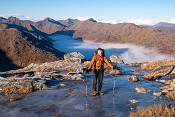


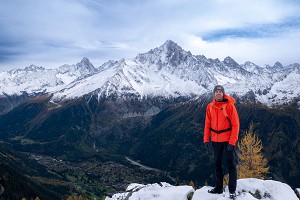

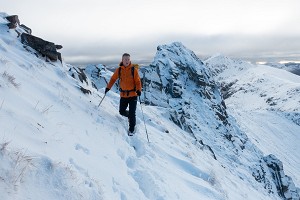

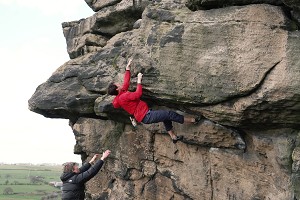

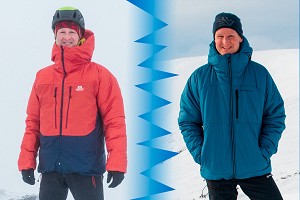

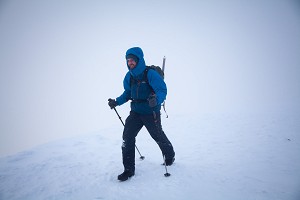

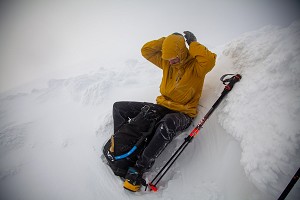
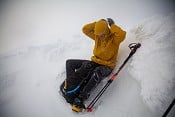




Comments
I've got one (standard weight) from about 6-7 years ago too. It's very well made and very comfortable but it tends to get more casual than active/hill use as I find it has quite niche set of conditions were it works well. If it's cold and windy it tends to need a shell over it and (unless it's Baltic is) is too warm, without a shell too much wind gets through, if it's milder it tends to be too warm and doesn't dry as fast as fleece. Great for moderate output in cold not too windy days though.
Although this lightweight version looks much more versatile and easier to stash etc.
Whilst the write up makes a good read, £220? It's getting a bit silly.
I've just received back a repaired (new zip) 8 year old Patagonia jacket. Patagonia sent me a free postage label to send it off for repair and didn't charge for the repair or return postage.
I'm happy to give them my money when I need new gear - which probably won't be any time soon if they're willing to keep repairing my old stuff!
The other day we went camping in Eskdale. Years ago this would probably have cost £2-3 per person. We stayed on a farmer’s field which was pretty basic (ie it had some portaloos, but no showers) and it cost £10 per person. Fisherground, which is just up the road, is £20 per person and you have to pay an additional £5 for the privilege of parking your car there.
In short, stuff costs more than it used to; however, within the stuff that we buy there’s scope to spend more and spend less. Patagonia is a premium brand - hence costs more. The aftercare is amazing and I doubt that’s cheap for them to maintain. If you want to spend less you can.
Very much this . As far as I know , and I’m happy to be corrected, none of the premium brands offer anything like as good aftercare . Also I’ve no idea how many bits of Patagonia kit I’ve had over the years( but it’s a lot ) and have only ever paid full price ( minus 10 % obvs ) a couple of times . Usually you can get stuff for 30% off retail in sales using that there internet and often half price. My new Patagonia salopettes were half price , still spendy but add in they probably last 10 years ,,well worth it . I fancy one of these and will just wait until next year or one of the big stockists to have a sale.
.